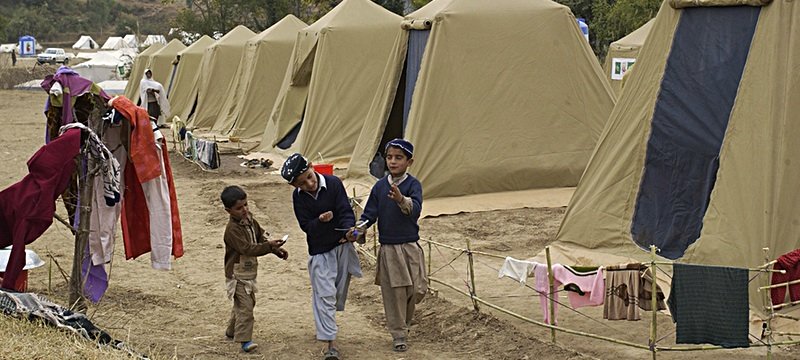“To be called a refugee is the opposite of an insult; it is a badge of strength, courage and victory.”
You talk about your break-up with your boyfriend or the betrayal of your best friend, but being a refugee is the toughest challenge in life. Nothing is as hard as being forced to leave from your homes because of war and violence. Each one of them has their stories of loss, heartache and survival.
They were only left with one choice: fix their broken lives; start all over again! Thus, refugees deserve a shoutout from all over the world.
Today, June 20th, is the day we remember their exceptional courage and contribution to the society. Today, we celebrate World Refugee Day! Let us get to know more facts about refugees:
1.
A refugee is someone who has been forced to flee from his/her homes due to persecution, violence and war.
2.
An average of 23,000 persons per day are forced to leave their country and seek help and protection.
3.
Others flee because of religious persecution, gender, race, political stances and social status.
4.
The endless war in Syria escalated the numbers of refugees for two and a half million, moving to their neighboring countries like Jordan, Lebanon, Turkey, Iraq and Iraq Kurdistan while others fled to Caucasus, the Persian Gulf and North Africa.
5.
Asylum seekers are waiting to be recognized as refugees but whose refugee status are not determined yet. Pakistan has the highest number of asylum seekers, followed by Iran and Sri Lanka.
6.
Under international law, refugees shall not be forced to go back to their countries they had fled.
7.
Developing countries 80% of the world refugees.
8.
Refugees are those who crossed from their country’s international frontier while IDPs or Internally Displaced Persons have not crossed the international boundary, however, have fled from their homes, too.
9.
Refugees are protected by refugee law and the mandate of the Office of the United Nations High Commissioner for Refugees.
10.
Colombia has the highest number of IDPs, followed by Syria and DRC (Democratic Republic of Congo).
11.
According to the UN Refugee Agency, majority of the refugees in 2012 come from Afghanistan (2.6 million), Somalia (1.1 million), Syria (728,500), Sudan (569,200) and DRC (509,400).
12.
Statistics show that 80% of the refugees are women and children.
13.
Refugees come from low-income countries.
14.
In 2011, 14.9 million people became internally displaced due to natural disasters. Majority of them are from Asia.
15.
Over 2.5 million Syrians have registered with the United Nations High Commission of Refugees. However, hundreds of thousands more await registration.
16.
Most of the famous refugees in UK are Albert Einstein, Sigmund Freud, Karl Marx, Joseph Conrad and Anish Kapoor.
17.
Refugees’ reasons for fleeing include war, political situation, human rights abuses, persecution and lack of safety.
18.
The Lutheran War Relief and United Nations High Commission for Refugees were established to help, protect and provide the needs of people during World War II.
19.
Australia accepts refugees in two ways, as an offshore Refugee and Special Humanitarian program or as an onshore asylum seekers.
20.
The real numbers of refugees are actually higher than what is recorded. Most refugees that are counted have registered while those not included in the count have illegally fled to the countries.
21.
Rape, sexual abuse and domestic violence is rampant to swarming camps in the refugee communities.
22.
Most refugees have to pay rent. Landlords will force them to pay rent though they lack source of income. They either have to go homeless or drown themselves with debts.
23.
The number of Iraqi refugees has been growing and growing within the past 30 years.
24.
Refugees are different from economic migrant. An economic migrant leaves his country to seek a better life and while refugees depart to get away from war, violence and suffering and seek protection.
The only way to resolve the fast-growing population of refugees is to go back to their countries when the war is over and is safe to return homes.
